Good UX Designers: The Keys to Creating Intuitive User Experiences
With the smartphone revolution, user experience (UX) design has become more critical. With people constantly interacting with websites, apps, and other digital products, having an intuitive, seamless user experience is no longer just a “nice to have” – it's now a fundamental requirement for product success.
But what exactly makes good UX designers? What skills and qualities set the UX superstars apart from the rest? In this article, we'll explore the traits that good UX designers consistently demonstrate. Master these, and you'll be well on your path to UX stardom.
Table of Contents
Deep Empathy for Users
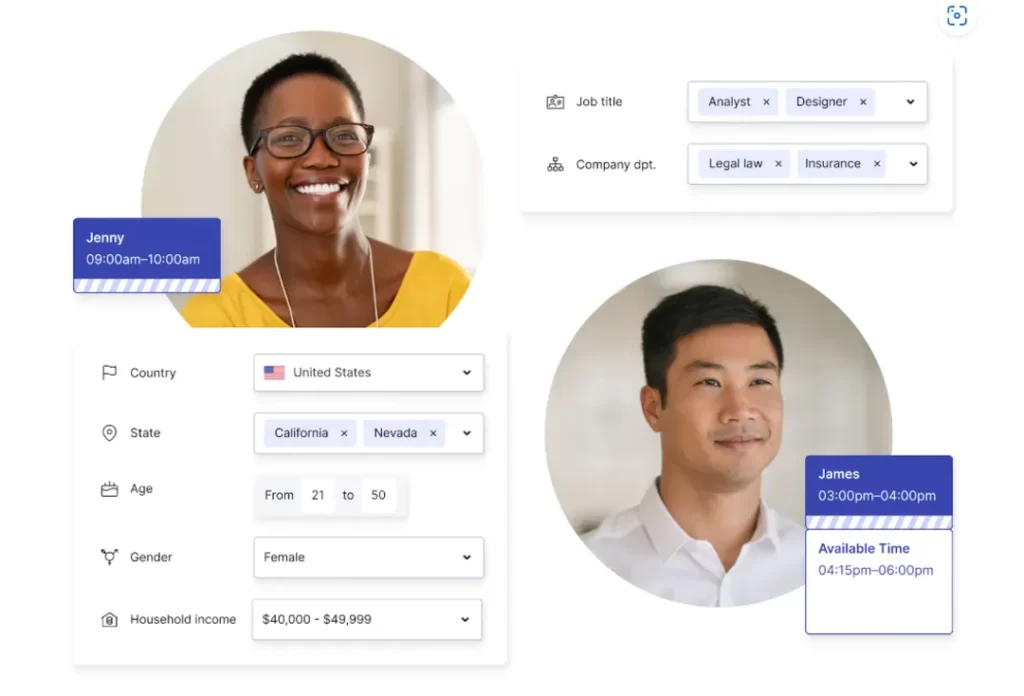
The foundation of good UX is having a deep understanding of your users – putting yourself in their shoes to grasp their needs, frustrations and motivations. Great UX designers have a natural ability to empathise with users across demographics, unveiling insights about how they think and feel when engaging with a product.
Rather than making assumptions, stellar UX designers dig deeper by:
- Interviewing and observing real users to gain first-hand insights into how they interact with products. Watching users engage with websites and prototypes can unlock subtle but critical observations.
- Immersing themselves in user feedback by spending hours poring through ratings, reviews, support tickets, emails and other sources. This reveals pain points and desires that users consciously articulate.
- Walking through scenarios depicting specific user journeys to understand frustrations and delight at each touchpoint. For example, the frustrations a first-time user may face in onboarding.
Great UX design starts with understanding humans deeply. Skilled UX designers continually seek out that profound human understanding.
The Ability to Translate Insights into Intuitive Designs
But deep empathy isn't enough on its own. The best UX designers also know how to translate those user insights into intelligent, seamless designs.
Great UX designers have a knack for digging into the psychology behind user behaviour. They understand which design patterns best guide users through flows and eliminate friction at critical moments.
For example, a skilled UX designer knows:
- Placing forms on multiple pages is less overwhelming than a long, endless page.
- Confirmation messages after necessary actions provide a sense of reassurance.
- Illustrations and animations can explain complex topics better than walls of text.
It's this ability to translate empathetic observations into smart design decisions that set the best UX designers apart. They don't just know users – they deeply understand how to design for them.
A Passion for Simplicity and intuitiveness

“Simple can be harder than complex,” said Steve Jobs. Great UX designers wholeheartedly agree with that mantra. They have a passionate drive to pare designs down to the most intuitive, frictionless interactions.
Skilled UX designers are constantly asking themselves:
- What elements on this page are distracting or unnecessary?
- How can we simplify this flow?
- Is this task as easy as possible for users to complete?
They obsess over details that may seem tiny but ultimately have a significant impact on the overall experience. Things like:
- Shaving a field or two from a form.
- Changing a button's colour or position to make it more prominent.
- Rewording an error message to be more human and less robotic.
To a novice, simplifying UX may seem trivial. But great UX designers understand the outsized value of hundreds of tiny tweaks that eliminate frustration and create delight. Their passion for simplification is what fuels their drive to perfection.
- Amazon Kindle Edition
- Hartson, Rex (Author)
- English (Publication Language)
- 868 Pages – 11/02/2018 (Publication Date) – Morgan Kaufmann (Publisher)
Obsession Over Details Most Would Overlook
Hand-in-hand with simplicity, great UX designers have an unrelenting obsession over details that most people don't notice or think much about. But they recognise that these subtleties ultimately make all the difference in UX.
For example, a skilled UX designer may obsess for hours over:
- The highlight colour when you hover over a selection.
- The timing of animations and transitions.
- The styling of form validation error messages.
- The positioning and prominence of buttons.
They understand that users may not explicitly point out these details. But subconsciously, the user experience is defined by the totality of these micro-interactions. Master them, and the overall UX feels cohesive and intuitive. Overlook them, and the product feels clunky.
Great UX designers leave no detail overlooked in their relentless pursuit of greatness. They identify the tiny irritants that degrade experiences and smooth them with obsession-fueled improvements.
Never Satisfied with the Status Quo
Because great UX designers are obsessed with perfection, they're never delighted with their work. There are always improvements to be made and wrinkles to be ironed out.
For most people, a project reaches a point of diminishing returns where the effort to improve something doesn't seem worthwhile. But genuinely gifted UX designers push far beyond that point. Their relentless drive for excellence compels them to keep making things more perfect.
This pursuit of excellence manifests in several ways:
- Iteration: They will release something and immediately start working on v2 and v3.
- Testing and Optimisation: They'll continually conduct usability studies and A/B testing to squeeze out more improvements.
- Soliciting Feedback: They proactively ask teammates and stakeholders for feedback – even after something has been launched – and humbly act on it.
Great UX design is never “done” – there are always improvements to be explored. The best designers embody this mindset.
Exceptional Communication Skills
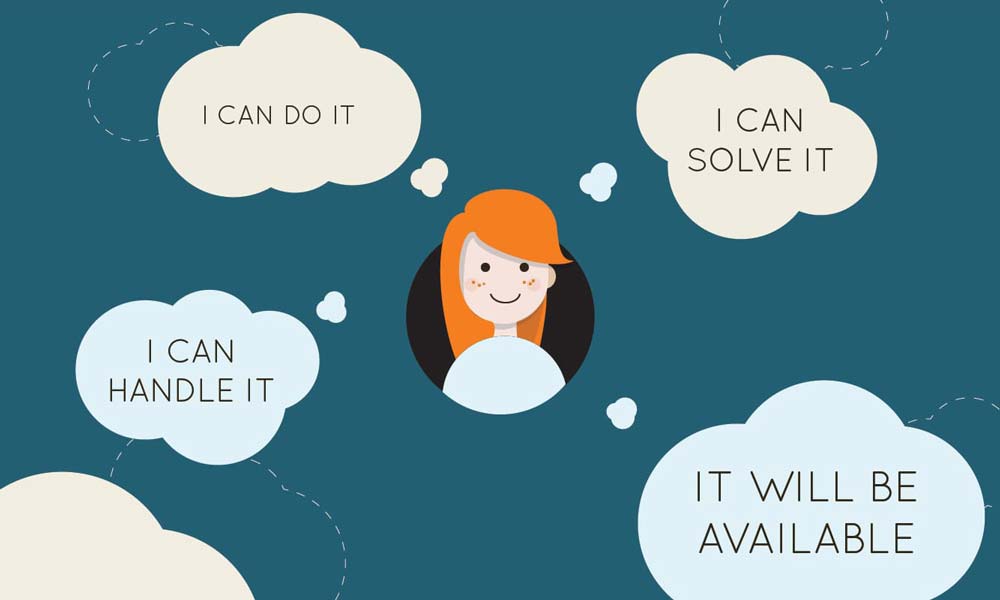
To create great UX, designers must work in a team. Every project involves collaboration with stakeholders, clients, engineers and others. This makes communication and explaining design thinking crucial skills for UX designers.
The best UX designers don't just create significant user flows and wireframes. They also do a masterful job communicating why their designs are the way they are. For example:
- Storytelling: They craft compelling narratives to explain their design strategy intuitively.
- Visuals: They use illustrations, animations and diagrams to explain concepts more clearly.
- Empathy: They put themselves in teammates' shoes to tailor communication and understand concerns.
- Active listening: They actively listen to feedback from others to improve designs vs. getting defensive.
- Meet people where they are: They adapt discussions to each stakeholder's level of design knowledge.
Exceptional communication and storytelling skills enable great designers to spread their vision to others and rally support. This ability to inspire and explain the “why” is crucial.
Equal Parts Creative and Analytical
Last but certainly not least, one of the hallmarks of gifted UX designers is their excellent blend of creative and analytical skills.
On the one hand, they have the creativity and vision to imagine how digital experiences could be:
- They think divergently and explore wild ideas.
- They have a flair for design and visual aesthetics.
- They've got writing chops to craft compelling copy.
But on the other hand, great UX designers have sharp analytical abilities:
- They obsess over analytics and metrics.
- They synthesise complex qualitative and quantitative data.
- They ruthlessly prioritise based on business goals.
This combination enables great designers to both think expansively and optimise pragmatically. They skillfully blend science and art.
Essential Skills of Successful UX Designers

While mindsets provide the foundation, executing great UX design requires diverse skills. Let's look at some of the capabilities and competencies that allow UX designers to deliver outstanding results:
User Research Skills
Understanding users is central to UX design. That requires skills in planning and conducting user research. Successful UX designers are competent at:
- Developing research plans: determining goals, best methods (surveys, interviews, contextual inquiry, usability studies, A/B tests, etc.), recruiting, and logistics.
- Performing research: facilitation skills to extract insights from interviews and tests. Ability to quickly build rapport.
- Analysing findings: discerning meaningful patterns, building frameworks, extracting actionable direction and synthesising diverse insights into unified recommendations.
Information Architecture Chops
Organising information intuitively requires information architecture (IA) skills. UX designers are pros at:
- Content audits: taking inventory of existing content and structuring it logically.
- Navigation design: group information into logical, labelled categories and flows that make sense to users.
- Taxonomy development: organising content using intelligent tagging, classes, and metadata.
- IA documentation: conveying IA through sitemaps, flowcharts, and wireframes.
Copywriting and Content Creation
While not full-time writers, UX designers regularly create site content and microcopy. Strong writing and content skills include:
- Concise, scannable writing that gets to the point fast.
- Clean page copy and microcopy that guides users effortlessly.
- Content hierarchy – structuring information in order of importance.
- Conversation, an inclusive tone that resonates with diverse audiences.
- Adapting content to different contexts and audiences.
Wireframing and Prototyping Chops
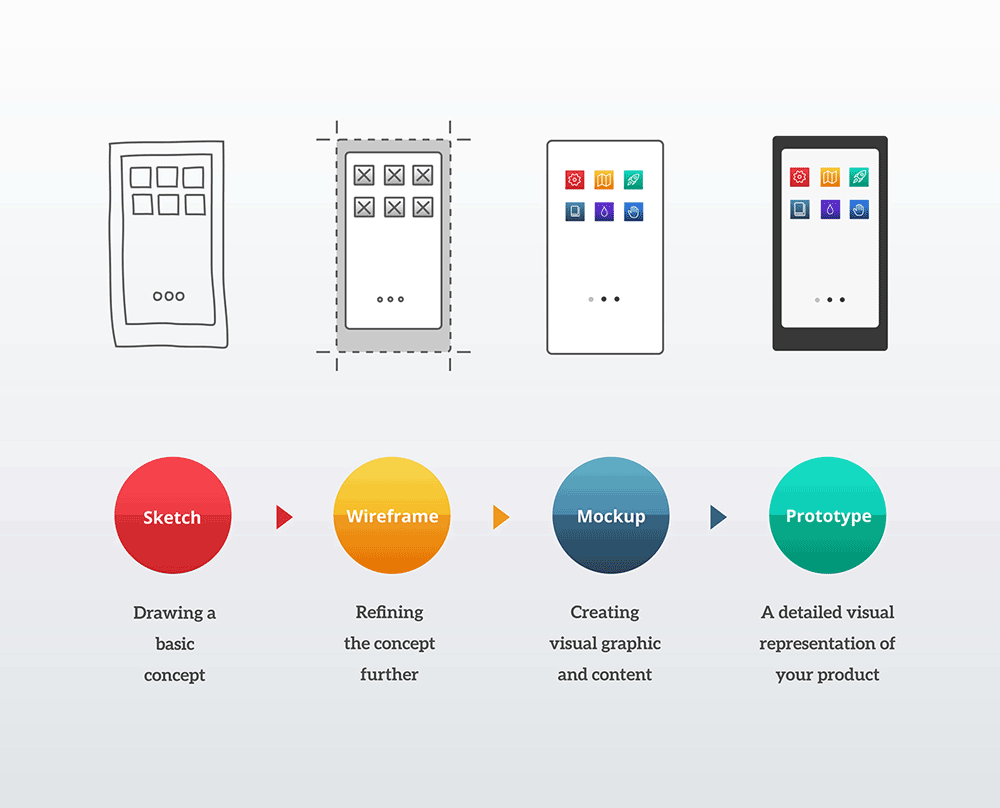
UX designers use wireframes and prototypes to explore and test ideas. Key skills include:
- Basic graphic design principles like layout, typography, colour, and contrast.
- Wireframing tools such as Sketch, Figma, and Adobe XD to block out structures.
- Creating quick, low-fidelity prototypes to visualise interactions.
- Building realistic, interactive prototypes to test with users.
Visual and Interface Design Flair
While UX designers don't need to be expert visual designers, they should have competency in:
- UI patterns and best practices for everyday experiences like search, checkout, etc.
- Mobile and responsive design patterns.
- Basic principles of visual hierarchy, colour psychology, and contrast.
- Collaborating with graphic designers to translate wireframes into polished designs.
- Design software such as Sketch, Figma, and Adobe Creative Suite.
Data and Analytics Literacy
UX designers use data to guide designs. Key skills include:
- Extracting insights from web analytics like Google Analytics.
- Translating qualitative research into quantitative metrics and goals.
- Leveraging A/B testing to drive optimisation.
- Analysing conversion funnels and dropout points.
- Establishing metrics aligned with user goals.
Collaboration and Communication Skills
UX designers work closely with others, like visual designers, developers, and stakeholders. Crucial soft skills include:
- Communicating ideas and rationale.
- Active listening and interview skills.
- Inclusive, collaborative mindset.
- Diplomacy in resolving disagreements.
- Translating technical UX jargon into plain language.
- Graphic facilitation skills to align team members.
So, exceptional UX designers blend expertise in research, information architecture, writing, prototyping, analytics, and collaboration. With diverse competencies, how do they approach the design process?
The UX Design Process and Approach
While every UX designer has their creative process, proven frameworks exist for structuring UX projects systematically. Most follow variations of design thinking methodology. Let's walk through the key phases:
Phase 1: Empathise and Gather Insights
UX projects kick off by learning about target users and their needs. This involves:
- Stakeholder interviews to understand business goals.
- User research through surveys, discussions, and observation to gauge behaviours and pain points.
- Reviewing analytics data like conversion rates.
- Immersing in the consumer's world. For example, signing up for a website as a new user.
Phase 2: Define the Problem
Next, UX designers frame problems in terms of user needs and goals. A tech company might have a business goal of increasing conversions. To reframe this, a designer will ask:
- What user goals lead to conversions? For example, an easy checkout process or clear product information?
- What barriers block users from achieving these goals?
Defining the right problem to solve leads to better solutions.
Phase 3: Ideate Creative Solutions
With problems defined, designers brainstorm solutions. This involves:
- Individually sketching out ideas and flows.
- Collaborative ideation workshops with stakeholders using techniques like storyboards or grey box wireframes.
- Identifying UI patterns and best practices suitable to solving the problem.
- Avoiding jumping to just one solution by ideating a range of options first.
Phase 4: Build Prototypes
Next, UX designers give ideas in tangible form by building prototypes. This involves:
- Creating low-fidelity wireframes to outline structure and flows.
- Building clickable prototypes to simulate interactions and test theories before heavy investment in visual design and dev work.
- Using prototyping tools like Figma, Sketch, InVision, and Adobe XD.
- Adding realistic content, transitions, and gestures to enhance prototypes over time.
Phase 5: Testing with Users
With prototypes built, UX designers validate ideas by putting them in users' hands. Testing techniques include:
- Guerrilla user testing: intercepting people in public to gather quick reactions.
- Moderated usability studies: having users complete tasks while observers note issues.
- A/B testing: trying variations with a portion of site visitors.
- Analytics analysis: reviewing site data like bounce rates for key pages.
Testing reveals flaws and areas for iteration.
Phase 6: Iterate Based on Learnings
The design process is not rigidly linear but cyclical. UX designers use learnings from testing to iterate:
- Identifying the most severe usability issues and focusing on redesigns accordingly.
- Using metrics to guide A/B testing-driven optimisation.
- Documenting problems unable to be addressed in the current iteration for future phases.
- Circling back to earlier stages as needed. For example, further user research to answer questions exposed in testing.
This iterative loop leads to continuous refinement and evolution of the design over time.
In summary, exceptional UX design balances systematic processes with creative problem-solving. But methods and skills can only go so far. What innate qualities push UX designers to the next level?
The X Factor: Key Traits of Standout UX Designers
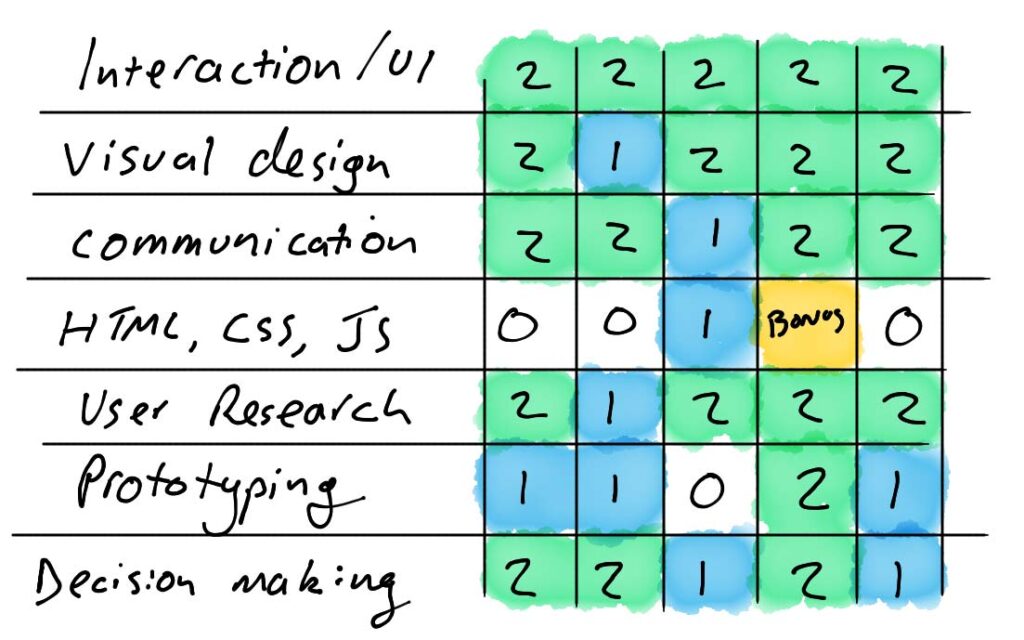
Skills can be learned, but intrinsic personality traits and perspectives are more challenging to instil. Let's look at some of the essential qualities that enable UX designers to thrive:
Innate Curiosity
Passionate curiosity fuels continuous learning and insight-gathering. Outstanding UX designers find inspiration everywhere and compulsively gather real-world experiences. Their inquisitiveness constantly refills their creative wells.
Relentless Empathy
Top designers overflow with empathy for users. They feel users' pain viscerally and maintain a fierce loyalty to their needs. This user advocacy persists even when business needs to pressure them.
Obsession with Quality
The best UX designers fixate on crafting pixel-perfect experiences. They're allergic to friction and intolerant of interactions that fail to delight. They'll stay up late perfecting details their business colleagues don't even register.
Visualisation Superpowers
Incredible visual communication skills allow UX designers to bring ideas to life for stakeholders. They rapidly storyboard concepts and wireframe flows to make the intangible tangible.
Creative Confidence
While open to feedback, exceptional UX designers own their expertise. They back design decisions with data and best practices. They persuasively sell revolutionary ideas that disrupt the status quo.
Spidey Sense for Trends
The best designers have their finger on the pulse of emerging technologies and trends. They draw inspiration from diverse industries and competitors way ahead of the curve.
Intrinsic Motivation and Grit
Finally, outstanding UX designers have interior fuel that powers them through challenges. They persist through setbacks and will work to perfect the designs they believe in. Passion and purpose drive them.
So, in essence, empathy, obsession, creativity, vision, confidence, curiosity, and grit separate the good from the great. With these mindsets, skills, and traits, what separates mediocre UX from experiences that feel almost magical?
The Makings of UX Magic
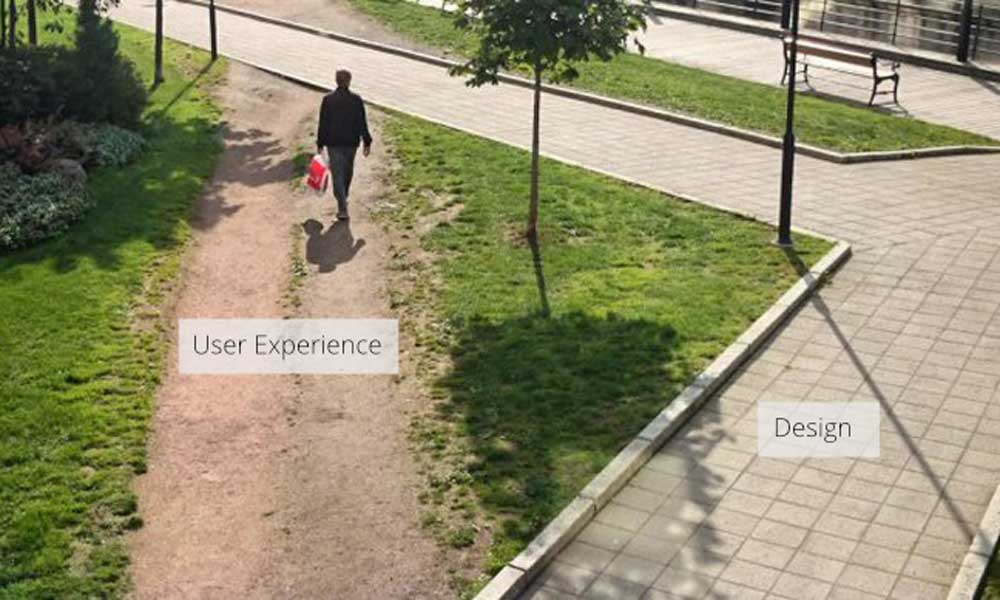
When all the pieces come together, exceptional UX design leads to products and digital experiences that feel effortless almost magical to use. What creates this UX magic? A few key ingredients include:
Frictionless Flows
Great UX designers connect experiences into seamless journeys. Moving between pages or apps feels frictionless, with logical next steps anticipated and shortcuts provided. It's like floating downstream rather than hitting walls.
Delightful Surprises
From fun animations to witty microcopy, UX magic contains unexpected moments of delight. Surprises charm and engage users when encountered at just the correct times.
Simplifying Complexity
The best UX makes complex processes easy by breaking them into intuitive sequences. For example, sophisticated AI is distilled down into friendly conversational interfaces.
Empowering Accomplishment
Users should move through experiences feeling in control. Clear paths to goals, progress indicators, and instant feedback instil accomplishment. It's the mastery sensation of learning to ride a bike.
- Murnan, Lisa (Author)
- English (Publication Language)
- 140 Pages – 03/17/2018 (Publication Date) – UX for the People (Publisher)
Personality and Soul
Soulless experiences feel robotic. The best UX infuses personality and warmth into interactions as if users are assisted by a savvy friend, not a computer.
Thoughtful Details
From reassuring confirmations to celebratory animations, thoughtful details create joy and emotional connection. Little touches tailored for specific contexts show someone cared.
In summary, UX magic stems from smooth journeys, surprising delight, simplifying complexity, empowering users, infusing personality, and getting the details right. It is hard to distil but transformative when present.
Takeaways: Becoming an Exceptional UX Designer
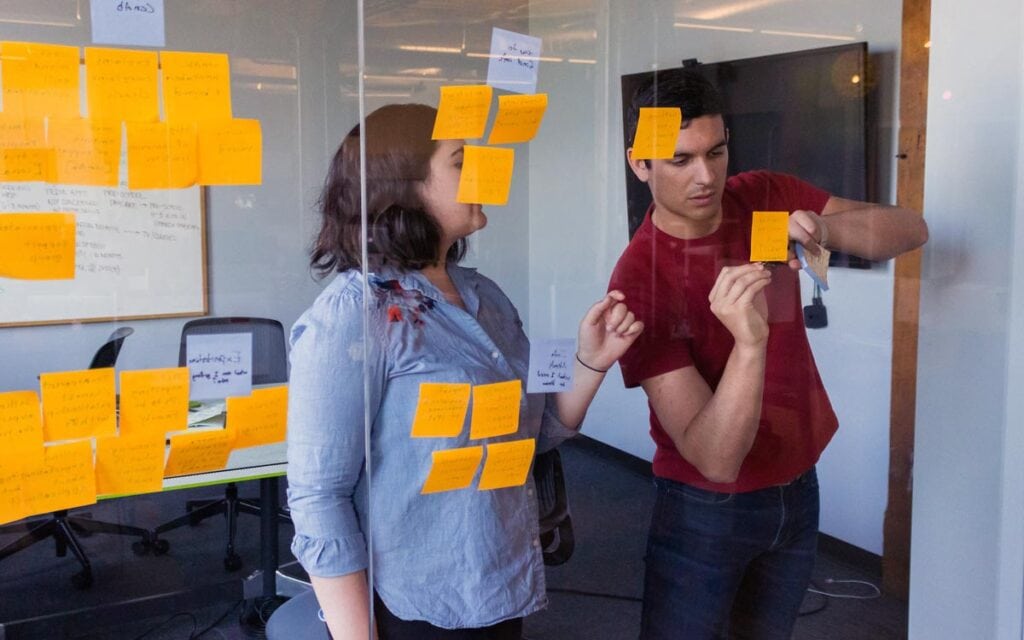
Let's wrap up with some key takeaways for both UX designers striving to level up and managers looking to build teams:
For UX Designers
- Master the processes but also develop your creative skills. Design thinking provides the framework, but talent is what fills it in.
- Immerse yourself in the user's world. Approach problems with empathy rather than assumptions.
- Broaden your thinking through ongoing learning. Follow leaders in diverse fields for inspiration.
- Speak the language of business. Tie designs back to data and metrics that matter to stakeholders.
- Build soft skills like communication, collaboration, and confidence. Half the job is working with others.
For Hiring Managers
- Look beyond hard skills. Evaluate candidates' mindsets, creative instincts, and portfolio work.
- Ask about their interests outside of design. Passionate curiosity powers innovation.
- Gauge soft skills fit. Even A+ designers will underperform in the wrong culture.
- Test skills but also collaborate on abstract problems. See how they think on their feet.
- Make space for passion projects. Great UX requires time for iteration and creativity.
Exceptional UX designers blend art, science, and soft skills into alchemy. They possess systematic know-how and x-factors like empathy, grit, and vision. By balancing capabilities with traits, they craft experiences that feel effortless and even magical.
This begins by getting inside users' heads, understanding their needs, and always advocating for their interests. Mastering design skills comes next. But true excellence stems from never losing curiosity, drive, and the beginner's mind, which is critical for real innovation.
With technology only growing more complex, exceptional UX design will only increase in demand. There's immense opportunity for thoughtful, creative designers to simplify experiences and connect with users in new ways. Are you ready to become the UX designer companies will compete for? The skills covered here are a strong starting point for this fulfilling career path.
Now, over to you – what essential UX qualities and skills would you add? What separates the good from the great designers you've worked with? Share your perspectives in the comments below!
- Conta, Anthony (Author)
- English (Publication Language)
- 464 Pages – 08/27/2023 (Publication Date) – New Riders (Publisher)
FAQs about Becoming an Exceptional UX Designer
Below are some frequently asked questions with answers to provide additional insights into becoming a skilled UX designer:
What education and background is required to become a UX designer?
While some UX designers have formal training in human-computer interaction or related fields, many come from diverse backgrounds like psychology, writing, visual design, or business. What matters most is interest in design, empathy for users, and a portfolio showcasing exposure to UX projects.
What is the best way to gain experience in UX design?
There are many paths to UX design. Options include internships, apprenticeships, volunteering to contribute to open source projects, taking on freelance work, transitioning from related roles like QA testing or visual design, or completing courses. Building out your portfolio is crucial.
What is the difference between UX and UI design?
UX design is the human-centred design process to create intuitive, frictionless experiences. UI design covers the look and feel of visual interfaces and touchpoints. Effective UX requires close collaboration between the two disciplines.
How much do UX designers earn?
According to Glassdoor, the average entry-level UX designer in the US earns $77,200. Senior UX designers can earn $115-150K or more. Salaries vary widely by location, company size, and industry.
Conclusion
In 2024, creating seamless user experiences is more crucial than ever. But UX mastery requires much more than knowing the latest design trends or tools.
The very best UX designers get to greatness by:
- Having deep empathy for users.
- Translating insights into intuitive designs.
- Obsessing over simplicity.
- Attending to subtle details.
- Relentlessly iterating.
- Communicating design.
- Blending creativity and analytics.
Develop these traits, and you'll be primed for success in the exciting field of UX. The demand for great UX designers is booming. With practice and perseverance, you can gain these skills to deliver outstanding designs that connect with users and propel product success.
Last update on 2024-04-27 / Affiliate links / Images from Amazon Product Advertising API



